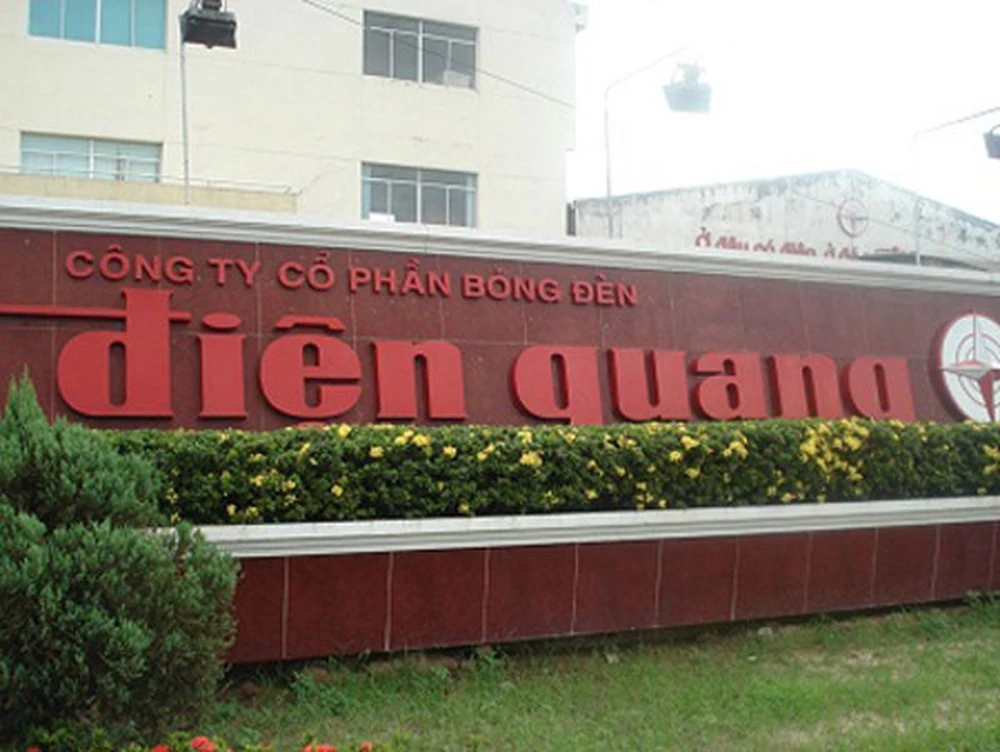
It’s current impasse, however, could be attributed to the selfish self-interests of its internal shareholders, which has now caused DQC to fall into difficult times.
Leading brand
The Dien Quang Lamp Factory was established in 1979, after it took over a ready production facility. In 1989, the factory name was changed to the Dien Quang Lamp Union Enterprise, with an independent production and business base. By 1991, the Ministry of Industry changed its name to the Dien Quang Lamp Company, and it began operating as a state-owned enterprise. By 2005, DQC officially became a joint stock company with its first registered charter capital at VND 23.5 bn, which grew to VND 157 bn by 2007.
Along with Rang Dong Light Sources and the Vacuum Flask Joint Stock Company (RAL), the Dien Quang Lamp Company is one of the top leading manufacturers of lighting and electrical appliances in Vietnam. In the last 40 odd years that it has taken to build into becoming a household brand name, DQC has established recognition of its LED products, compact lights, bulbs and electrical equipment in the minds of domestic consumers, especially in the southern market. Not only was DQC a pioneer in technology innovation, the company was also one of the first companies to list on the stock market. On 21 February 2008, DQC officially began trading on HOSE at a closing price of VND 232,000 per share. However, due to an unfavorable stock market, DQC quickly corrected and dropped below VND 100,000 per share after the session on 25 March in 2008.
All within family
The shareholder structure at DQC is inter-linked and rather complicated. Within just two years after equitization, DQC increased its capital more than six fold, mainly by paying dividends through shares to its internal shareholders. By November 2007, Ms. Ho Thi Kim Thoa, then Chairman cum General Director, and her three family members, namely, her mother Ms. Tran Thi Xuan My, her younger brother Mr. Ho Quynh Hung, and her daughter Ms. Nguyen Thai Nga, were holding almost 2.12 million shares of DQC, which was equivalent to 13.5% of total shares. By January 2013, the DQC management report showed that the total number of shares held by these four shareholders had reached to almost 5.4 million shares, equivalent to 22.3% of the company’s charter capital.
More family members joined as shareholders of DQC and Dien Quang Trading and Investment Joint Stock Company by 2012. With the addition of another daughter, Ms. Nguyen Thai Quynh Le, and a biological nephew, Mr. Ho Duc Dung, the entire holding of shares of Ms. Ho Thi Kim Thoa's family was at about 33.3% by the end of 2013. During the period between 2014 and 2016, ownership of shares by Ms. Ho Thi Kim Thoa's family at DQC increased even more significantly after purchase of transactions and share dividends. By the end of 2016, by adding the number of shares of these six family members and one organization, Ms. Ho Thi Kim Thoa's family became owners of nearly 14.22 million DQC shares, equivalent to 41.4% of charter capital.
Although now Ms. Thoa has almost divested many of the family owned shares, her family members still hold 11.69 million shares in DQC, equivalent to 42.4% of total outstanding shares. The two younger brothers of Ms. Thoa, Mr. Ho Quynh Hung, Chairman cum General Director, and Mr. Ho Duc Lam, own 2.51 million shares and 1.65 million shares, equivalent to 9.14% and 6.01% of capital, respectively.
Competition with Chinese goods
At the annual shareholders meeting of 2020, the Board of Directors of DQC were asked many unpleasant questions from shareholders on the operations of the company. For instance, the production and business plan in 2019 showed revenue at VND 1,200 bn as compared to VND 1,160 bn in 2018, but the profit adjusted sharply from VND 150 bn to only VND 60 bn. The actual shock for DQC shareholders came when the Board of Directors announced their 2020 business plan with two scenarios of VND 1.8 bn profit and VND 9.6 bn loss. According to Mr. Ho Quynh Hung, in the development process of Led lighting, DQC Board of Directors predicted a very high level of competition due to technical barriers and tariffs. Hence, although LED revenue was still growing, profit would decrease due to price competition.
DQC shareholders did not sympathise with Mr. Ho Quynh Hung’s version of price competition, which was made abundantly clear in 2016. Previously, investors had noticed a slowdown in the DQC export market, and although export revenue increased sharply in the period between 2013 and 2015, most of it came from liquidating compact shipments since 2007. The low cost of shipping was one of the main reasons for the profit margin in this period. However, since 2016, when low cost shipping no longer contributed to revenue, difficulties in the export market were becoming quite evident. DQC cannot compete with the formidable Chinese enterprises which work with lower production costs in large-scale manufacturing units, having a high volume capacity and a higher specialization of skills.




















